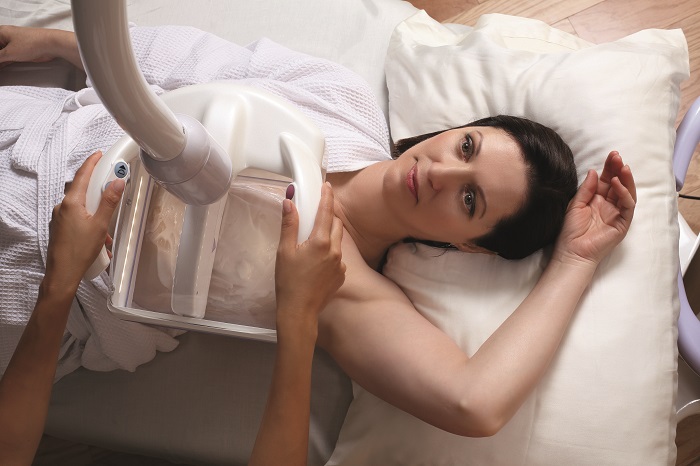
The global automated breast ultrasound systems market is primed for unprecedented growth, according to recent projections. By 2033, the market is forecasted to surge to a remarkable valuation of US$ 7.23 billion, compared to an estimated US$ 1.95 billion in 2023. This represents a staggering compound annual growth rate (CAGR) of 14% over the coming decade.
This exponential growth trajectory underscores the increasing demand for automated breast ultrasound systems globally. These systems offer enhanced efficiency, accuracy, and patient comfort in breast cancer screening, driving their adoption across healthcare facilities worldwide.
Request A Sample Copy of This Report:
https://www.futuremarketinsights.com/reports/sample/rep-gb-606
Key Challenges:
- Limited skilled professionals: Interpreting the complex 3D images generated by automated breast ultrasound systems (ABUS) requires specialized training. The lack of radiologists with ABUS expertise and the high cost of standardized training programs pose a significant hurdle.
- Uneven awareness and infrastructure: Limited awareness about breast cancer in developing economies, coupled with underdeveloped healthcare infrastructure, restricts market penetration in these regions.
- Technical limitations: Compared to mammography, ABUS is more prone to false positives. Additionally, it cannot definitively differentiate between benign and malignant tumors, raising concerns among healthcare providers. Notably, ABUS also struggles to detect calcifications, which are often indicative of cancer in women over 45.
These challenges need to be addressed to unlock the full potential of the automated breast ultrasound systems market. Advancements in training programs to create a skilled workforce, coupled with efforts to raise awareness and improve healthcare infrastructure in developing economies, are crucial for sustained market growth. Additionally, technological advancements aiming to improve the accuracy of ABUS and its ability to detect specific features like calcification are essential for wider adoption in the future.
Key Takeaways from FMI’s Automated Breast Ultrasound Systems Market Study:
- Increasing government investment to promote breast cancer awareness among women will bolster demand across the U.S.
- The U.K is expected to experience noteworthy growth as governments and private organizations aim at curbing high mortality rate due to breast cancer.
- Presence of modern healthcare infrastructure will increase automated breast ultrasound system adoption across Germany
- Saudi Arabia will offer lucrative opportunities owing to rapid urbanization and emergence of advance diagnostics centers.
- India is expected to exhibit increasing demand owing to increase in per capita income and to growing incidence of breast cancer among women.
- Hospitals are expected to lead the market driven by faster accessibility modern tool and availability of skilled professionals.
Request Report Methodology: https://www.futuremarketinsights.com/request-report-methodology/rep-gb-606
Competitive Landscape:
GE Electric Co., Siemens A.G., Hitachi Ltd., SonoCiné Inc., Koninklijke are some prominent players operating in the automated breast ultrasound system market. They are focusing on improving the accuracy of automated breast ultrasound system for faster assessment of cancer screening in addition to getting government approval for their products.
For instance, Hitachi being the global leader in smart life & eco-friendly systems launched its latest automated breast ultrasound system “SOFIA” capable of scanning and acquiring image of the complete breast.
Koninklijke launched Philips EPIQ and Affiniti ultrasound systems as a part of its automated breast ultrasound system product range. Philips EPIQ is laced with an integrated eL18-4 transducer and employs anatomical intelligence for accurate imaging of the breast with high tissue density.
More Insights on the Global Automated Breast Ultrasound Systems Market:
In its latest report, FMI offers an unbiased analysis of the global automated breast ultrasound system market, providing historical data for the period of 2016-2020 and forecast statistics for the period of 2021-2031. In order to understand the global market potential, its growth, and scope, the market is segmented on the basis of end user (hospitals, diagnostic imaging laboratories), across seven major regions (North America, Latin America, Western Europe, Eastern Europe, Japan, Asia Pacific excluding Japan, and Middle East & Africa).
Automated Breast Ultrasound Systems Market by Category:
End User:
- Hospitals
- Diagnostic Imaging Laboratories
By Region:
- North America
- Latin America
- Europe
- Asia Pacific
- Middle East and Africa
Purchase Now to Access: https://www.futuremarketinsights.com/checkout/606
About Future Market Insights (FMI)
Future Market Insights, Inc. (ESOMAR certified, recipient of the Stevie Award, and a member of the Greater New York Chamber of Commerce) offers profound insights into the driving factors that are boosting demand in the market. FMI stands as the leading global provider of market intelligence, advisory services, consulting, and events for the Packaging, Food and Beverage, Consumer Technology, Healthcare, Industrial, and Chemicals markets. With a vast team of over 400 analysts worldwide, FMI provides global, regional, and local expertise on diverse domains and industry trends across more than 110 countries.
Contact Us:
Future Market Insights Inc.
Christiana Corporate, 200 Continental Drive,
Suite 401, Newark, Delaware – 19713, USA
T: +1-845-579-5705
For Sales Enquiries: sales@futuremarketinsights.com
Website: https://www.futuremarketinsights.com
LinkedIn| Twitter| Blogs | YouTube
